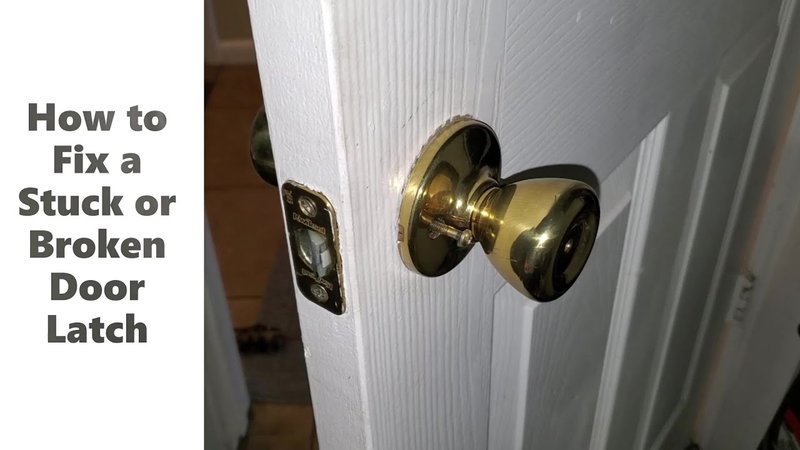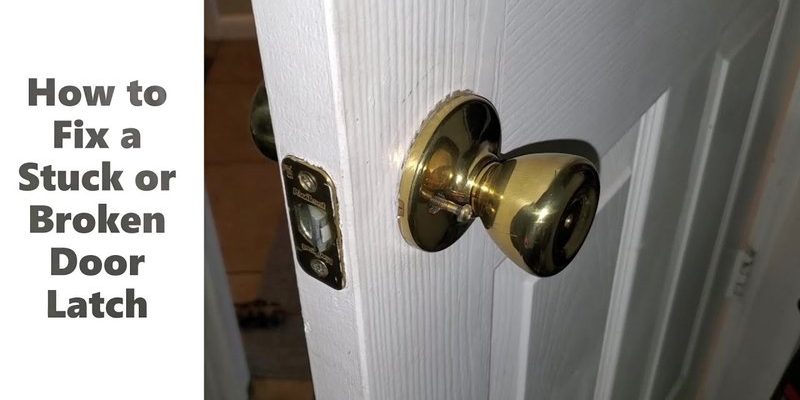
In this guide, we’ll focus on fixing an internally broken latch. This can happen in various ways, from wear and tear over time to accidental damage. For example, if you have a standard door latch from a popular brand like Kwikset or Schlage, the repair process may be somewhat similar. You’ll need a few basic tools, some patience, and a willingness to roll up your sleeves.
Understanding the Door Latch Mechanism
Every latch has a simple job: to keep your door closed while also allowing you to open it easily. Think of it like a secret handshake. When the door is shut, the latch extends into the door frame, securing it in place. When you turn the doorknob, the latch retracts, letting you enter.
However, when something goes wrong inside the latch, it can lead to a headache. Sometimes a spring gets stuck or a part wears down. When the internal mechanism is broken, it can stop the latch from working altogether. To repair it, you first need to understand what you’re up against.
Tools You’ll Need for the Repair
Before you dive into the repair, let’s gather the tools you’ll need. Having everything at your fingertips can make the process smoother. Here’s a handy list:
- Screwdriver (usually a Phillips head)
- Flathead screwdriver or knife for prying open the latch
- Lubricant (like WD-40 or silicone spray)
- Replacement parts (if necessary)
- Flashlight to see inside the latch mechanism
You might be wondering why you need a flashlight. The latch is often located deep within the door, and good lighting helps you see any problems clearly.
Removing the Door Handle
Let’s start by removing the door handle. This is usually the first step in accessing the latch mechanism. Grab your screwdriver and look for the screws holding the handle in place.
1. Locate the screws: Check the side of the door handle or the inside of the knob.
2. Unscrew the handle: Carefully remove the screws and set them aside in a small container to avoid loss.
3. Detach the handle: Gently pull the handle apart to expose the latch.
Sometimes, the handle can be stubborn. If you encounter resistance, give it a little wiggle. But be gentle! Forcing it can lead to further damage.
Inspecting the Latch Mechanism
Now that you have the handle off, it’s time to inspect the latch mechanism. This part might look like an intricate puzzle, but don’t worry; it’s simpler than it seems.
1. Look for visible damage: Check for broken springs or bent metal pieces.
2. Reset the latch: Sometimes, the latch can get stuck in an unresponsive position. Gently move it back and forth using a flathead screwdriver.
3. Lubricate: Apply a little lubricant to the mechanism. This can help free up any stuck parts and make everything move smoother.
Honestly, a little bit of lubrication can do wonders. It’s like giving the latch a refreshing drink of water.
Replacing Broken Parts
If you notice any broken parts during your inspection, it’s time to replace them. You can often find replacement parts at your local hardware store or online. Here’s how to do it:
1. Identify the broken part: Take a picture or write down what you need.
2. Find a replacement: Check with the brand or a universal latch kit that matches your door type.
3. Install the new part: Follow the manufacturer’s instructions for installation. It’s usually as simple as swapping out the broken piece for the new one.
If it feels tricky, don’t hesitate to ask a store employee for help. They’re usually happy to guide you through the process.
Reassembling the Door Handle
Once you’ve repaired or replaced the broken latch parts, it’s time to put everything back together. Here’s how to properly reassemble the door handle:
1. Align the handle: Match it back to its original position.
2. Screw it back in: Use your screwdriver to secure the handle tightly, but don’t crank it too hard. You want it snug, not stripped.
3. Test the latch: Before closing the door, give the handle a few turns to make sure everything works smoothly.
Testing is crucial. It’s like taking your car for a spin after getting a tune-up; you want to ensure it runs well.
Final Thoughts on Door Latch Repair
Repairing a door latch that’s broken internally might feel daunting at first, but it’s a manageable task with the right tools and approach. Remember, understanding how the latch works makes a huge difference. Take it step by step, and don’t rush the process.
If all else fails and the latch seems beyond repair, consider calling in a professional. Sometimes, a little expert help goes a long way. But with these tips, you’re now well-equipped to tackle the challenge yourself—and hopefully, you’ll find it a bit enjoyable too!
